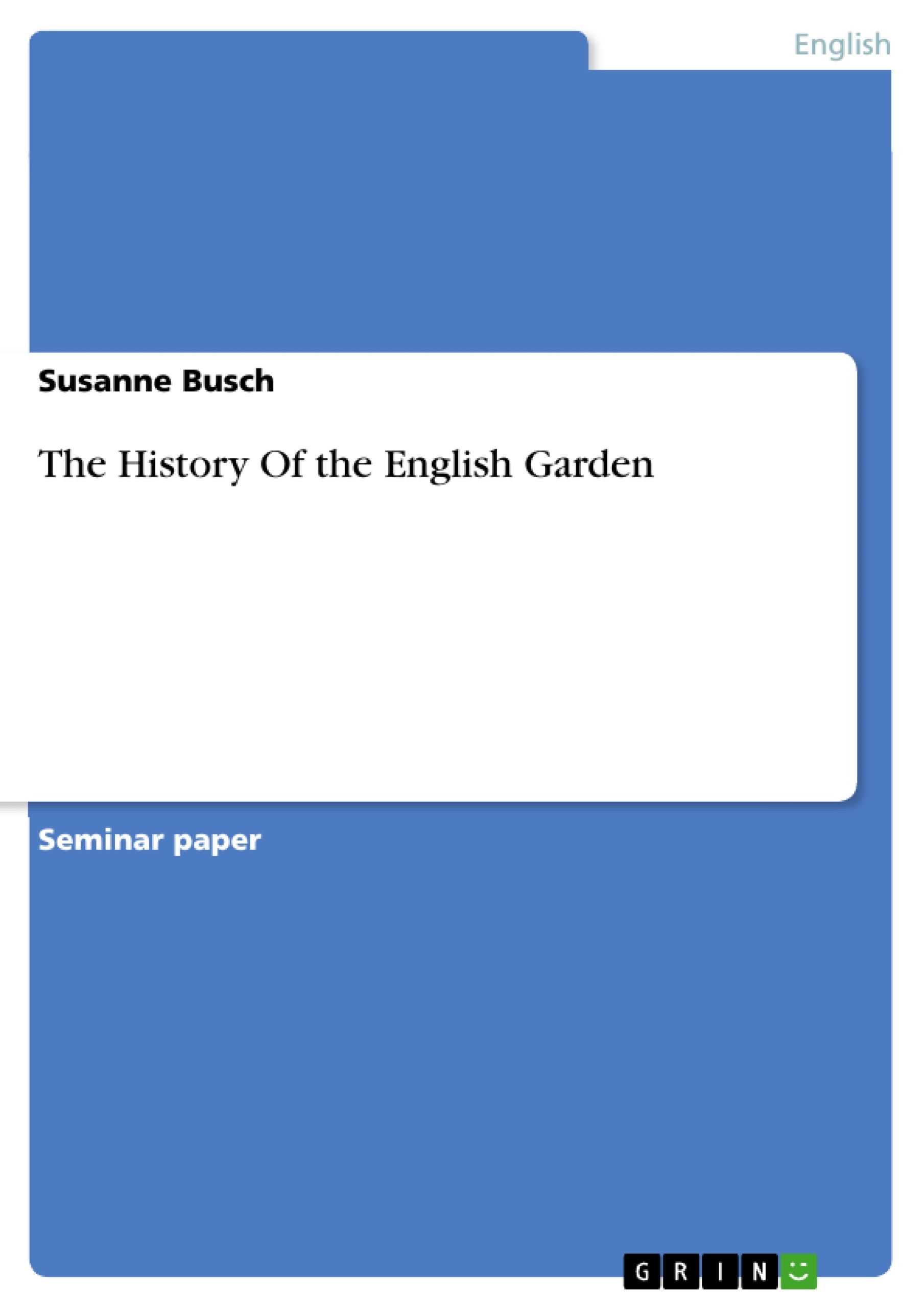In no other country in the world are more gardens open to the general public than in England. There is both a huge variety of styles and a big selection of plants. The list of international wellknown gardens is long. Gardens like Sissinghurst and Stourhead show the special character and greatness of the English Garden; however, each garden has its own flair and expresses the sometimes quite eccentric personality of the owner or creator. Besides, in England a person who renders gardening a great service gains honour and fame. For many gardening is more a prestigious rather than plainly a leisure activity. The art of the garden plays an important role in English society in general. The garden authority with the most influence is the “Royal Horticultural Society”, which has nearly 250,000 members. The garden festivals they arrange are popular social events. Moreover, the National Trust is a famous and very important institution concerning conservation work. The full name stands for the principles of this charity: “The National Trust for Places of Historic Interest and Natural Beauty”. One aim of their work is to care for over 230 gardens in Great Britain. Apart from this, Britain has a very favourable climate. Frost-free zones for tropical plants as well as cold and windy weather can be found in only one county - e.g. in Cornwall. That makes it possible to get so different impressions of a landscape in a small part of the country and the climate meets the requirements for the 120,000 different species of plants growing in British gardens. The vividness of the English garden history in the present art of garden is remarkable. Many ideas were taken over from former garden styles like planting lavender, rosemary and ivy which were all brought to England by the Romans and can be find in all gardens today. Maybe the typical English garden like the continental people might see it is the English Landscaped Garden, which is the English contribution to the garden history.The recent head gardener of the Trelissick Gardens (National Trust), Barry Champion, may answer the question why the English people of all nations are famous for their love of gardens.He thinks that there is a difference in the art of gardening for example between the Germans and the English. [...]
Inhaltsverzeichnis (Table of Contents)
- The Fascinating English Garden
- The History of the English Garden
- The Renaissance Garden in England
- The Baroque and Rococo Garden in England
- The English Landscaped Garden
- English Garden Theories in the 18th and 19th Century
- The Victorian or Formal Garden
- The Garden during the Arts and Crafts Movement
- The Modern Garden
- The Continuance of the Classical Garden
- The Twentieth Century
Zielsetzung und Themenschwerpunkte (Objectives and Key Themes)
This work explores the fascinating history of the English garden, highlighting its unique development and evolution through various styles and influences. It delves into the significance of the English garden in society, its cultural impact, and the interplay between history, aesthetics, and nature.
- The evolution of English garden styles from the Renaissance to the twentieth century
- The influence of foreign garden design, particularly from Italy and France
- The role of the English garden in society and its cultural impact
- The significance of the English Landscaped Garden as a unique contribution to garden history
- The importance of the garden as a space of beauty, reflection, and cultural expression
Zusammenfassung der Kapitel (Chapter Summaries)
- The Fascinating English Garden: This chapter introduces the English garden as a diverse and celebrated landscape, highlighting the role of gardens in English society and the influence of the Royal Horticultural Society and the National Trust. It explores the varied climate and the extensive plant species that contribute to the richness of English gardens.
- The Renaissance Garden in England: This chapter examines the origins of the English Renaissance garden, focusing on notable gardens created during the reign of Henry VIII, such as Hampton Court and Nonsuch. It discusses the popularity of the Gazebo, the development of knot gardens, and the architectural aspects of the English Renaissance garden, including sunken gardens and topiary.
- The Baroque and Rococo Garden in England: This chapter delves into the influence of the French model on the English garden during the Baroque and Rococo periods. It discusses the adaptation of French styles by English garden designers, exemplified by the redesign of Hampton Court during the reign of King William.
Schlüsselwörter (Keywords)
The key focus of this work lies on the historical development of English gardens, encompassing diverse styles, such as the Renaissance, Baroque, Rococo, and the English Landscaped Garden. It explores significant institutions like the Royal Horticultural Society and the National Trust, as well as the role of the garden as a cultural symbol, space for leisure, and a reflection of the English landscape and society.
- Quote paper
- Susanne Busch (Author), 2001, The History Of the English Garden, Munich, GRIN Verlag, https://www.grin.com/document/59185




